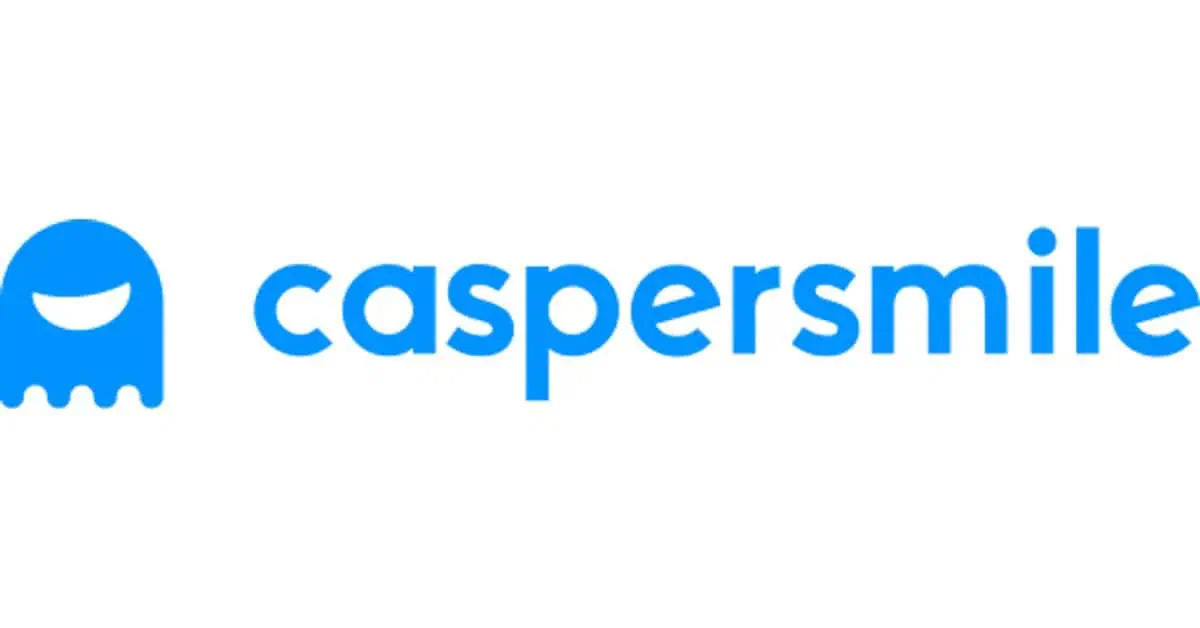Are you interested in straightening your teeth, but the idea of train track braces is putting you off? Well, don’t worry because these days there are plenty of options when it comes to dental braces, and there are plenty of alternatives as well. But first, let’s find out more about braces, including:
- What are train track braces?
- How do fixed braces work?
- Types of braces
- Alternatives to train tracks
- How much do braces cost?
There are all sorts of ways to straighten your teeth, and traditional fixed braces are just one of those ways. We will discuss them in detail, as well as alternatives, so you have all the information you need to make a decision. You may even end up deciding that train tracks are the right choice for your needs!
Train track braces aren’t the only option. Clear aligners are effective for mild to moderate cases, and they are practically invisible. Some clear aligners like Invisalign are even suitable for some severe orthodontic issues.
Of course, the best person to help you decide on a treatment route is your dentist, so always consult them before making your final decision.
Are train track braces putting you off? Well, luckily, there are plenty of good alternatives.
We recommend Smile White aligners. Like Invisalign, they can treat 90% of cases. However, these Aligners are a lot more affordable, plus you’ll get free whitening and aligners worth £790.
Read our Smile White review for more information, or book a FREE e-consulting.
Use “DENTALY5OFF” to save an additional 5% on your treatment.
In This Article
What are train track braces?
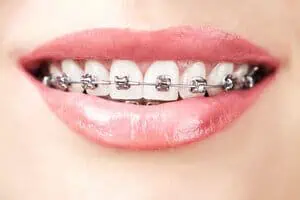
Train tracks are just another name for traditional braces. It comes from the way braces look when they are attached to the teeth with the archwire running through connecting the metal brackets.
When people think of braces, they think of the traditional metal train track look. However, there have been advancements in technology in more recent times which means that they are now smaller, lighter and more discreet.
They are also suitable for both adults and teens, although if you are getting NHS treatment it is free for children under the age of 18. It is worth checking with your dental practice what the suitable age is for children to start wearing braces if you aren’t sure.
What are train tracks made from?
Fixed braces are made from metal; more specifically stainless steel that is sometimes combined with titanium. The metal brackets that sit on each tooth are then connected by a flexible wire, also made from stainless steel. The arch wire is secured by small rubber bands, that can come in many different colours.
Bigger rubber bands are also used to help pull teeth in different directions. Sometimes, metal bands (orthodontic bands) are used to gradually move teeth that need stronger pressure into position.
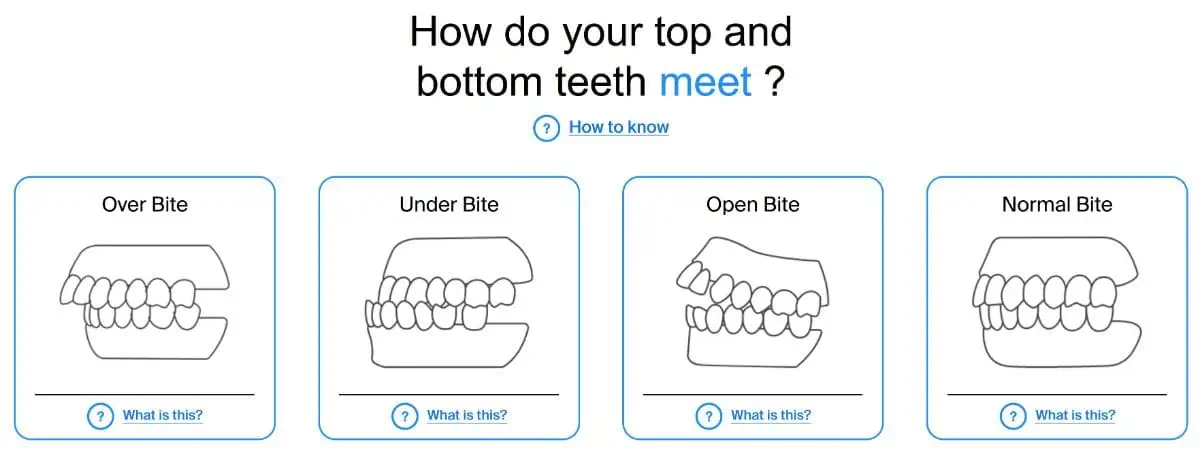
How do fixed braces work?
Now that you know what traditional braces are made from it is a simple step to understanding how they work. Your orthodontist attaches metal brackets to each tooth. The metal wires, known as the arch wires, connect to each one and are secured by small elastic bands.
Braces work when your dentist shortens the wire over time and adds larger rubber bands in certain positions to slowly move your teeth into the desired position.
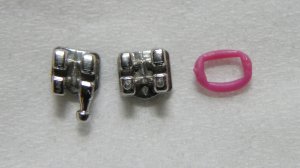
It can take 1-2 hours to attach the braces to your teeth, and then, depending on the severity of your case, 1 – 3 years to straighten your teeth. Braces treatment time can depend on the type of braces you have, your age and your individual severity of misalignment. In cases of misalignment or malocclusion, you may need to wear an orthodontic appliance before your braces which can add up to 12 months to your treatment.
There are some alternatives to braces that have a much shorter treatment timescale if you are eligible for them. You will need to visit your dentist or orthodontist to decide on a suitable option before making a final decision.
How are train track braces fitted?
The following video shows the steps of braces being fitted so that you know exactly what to expect when you get yours.
Types of braces
If you get treatment through the NHS, generally your only option to improve your smile is train track braces, but the criteria for eligibility are quite stringent with the NHS. However, if you opt for private treatment there are a multitude of options. So, let’s discuss other types of braces and alternatives.
If you are wondering how to know if you need braces, then read our article to find out more and make an appointment with your dentist or orthodontist.
Ceramic braces
Ceramic braces are a little more discreet than regular braces, although not unnoticeable. This is because the material that they are made from is clear, white or tooth-coloured ceramic, helping them to blend into the teeth behind them. The wires that connect the brackets can also be tooth coloured which helps them to be less noticeable.
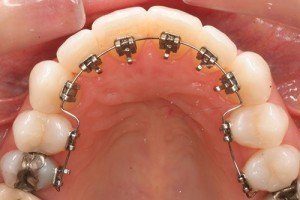
Unfortunately, the rubber bands that secure the wire to the braces are easily stained. And, although they work just like traditional braces, they cost a little bit more and are not available with the NHS.
Lingual braces
The most discreet fixed braces are lingual braces. This is because the brackets are attached to the teeth facing inwardly so that they cannot be seen from the outside (unless the mouth is open). They are often difficult to adjust, treatment time takes longer and they can often cause speech problems due to the proximity to the tongue.
This type of braces are much more expensive than traditional braces, and can often have more cons than pros. However, speak to your dentist if you are interested in getting this type of braces.
Self-ligating braces
Self-ligating braces look very similar to traditional fixed braces, but they work quite differently. They are self-tightening and the modern technology of heat-activated wires makes adjustments more steady and gentle.
These braces are made to be more comfortable, easier to adjust and need no elastic or metal bands to work. The lack of rubber bands also means that they are more hygienic than traditional braces.
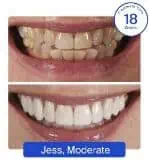
- Treats up to 90% of Cases
- Up to 40% cheaper than Invisalign
- Buy now, pay later in interest-free instalments
- Rated 4.9/5 on Trustpilot
- As seen on 5, BBC, 4, DailyExpress, TheMail
- Get 5% OFF with our discount code DENTALY5OFF and FREE Whitening and Retainers worth £790
Clear braces
Many people think that clear braces are similar to invisible aligners, but what’s the difference? Clear braces are actually just traditional braces that are clear or tooth coloured. There are not really any similarities between these and aligners like Invisalign other than the fact that they both are used to straighten teeth. Some examples include the following:
- Damon Clear
- Radiance Plus
- Clairty
- InVu
- Quick Straight Teeth
What are some alternatives to fixed braces?

Invisible braces
The alternatives to fixed braces for straightening teeth are clear aligners (invisible braces). Clear aligners are a series of removable clear plastic trays that are custom made to the shape of your teeth. They fit snugly over your teeth to apply pressure and slowly guide your teeth into the desired position.
Every 2 weeks, the aligners are changed for a new set so that they can continue to align your teeth. There is a varying amount of time that treatment can last depending on which aligner you choose and your individual case. Treatment time can also depend on your ability to comply with wear time.
Many types of aligner treatments come with teeth whitening included with is a bonus. Teeth whitening with braces isn’t always possible, but it is with clear aligners because they are removable.
Invisible braces, also known as clear aligners are generally used for less complex orthodontic cases. Train track braces are used for more severe cases of misalignment and crooked teeth.
- Up to 80% cheaper than Invisalign
- Buy now, pay later in interest-free instalments.
- Rated 4.5/5 on Trustpilot
- Starting at just 625 for single-arch treatment!
Caspersmile offers a convenient at-home solution for teeth straightening with their clear aligners. You can achieve a perfect smile in 3-5 months, wearing the aligners for 22 hours a day.
Caspersmile’s treatment is overseen by UK-licensed dentists, ensuring professional guidance throughout the process. The treatment starts with an at-home impression kit or a visit to a scan center, followed by a 3D preview of your future smile.
Every treatment comes with free teeth whitening, so you can brighten your smile while you straighten it!
- Hybrid in-office and remote treatment
- In-person visits with your orthodontist for safe, effective treatment
- Treats even complex cases of misalignment
- Various pricing options
Discover the flexibility and effectiveness of Impress Invisible Braces, the hybrid orthodontic solution that blends in-person care with the convenience of remote appointments. Suitable for both kids and adults, Impress offers a range of treatment options designed to cater to various needs, from mild to severe cases of misalignment. With the initial consultation happening in person, you’re assured of a tailored treatment plan that can address even the most complex orthodontic issues.
Impress Treatment Plans:
- Impress Super Light ($6,999): Perfect for mild cases, this plan promises results in up to 3 months, making it the quickest route to a better smile.
- Impress ($4,599): Designed for moderate cases, this option aims to perfect your smile within 4-10 months.
- Impress Plus ($5,599): Tailored for moderate cases requiring a bit more time, this plan spans 11-14 months.
- Impress Advanced ($6,999): The go-to choice for complex cases, offering comprehensive treatment over 11-24 months.
- Teens ($4,599): Specifically designed for teenagers, this plan addresses mild cases within 4-10 months, ensuring a confident smile during those crucial years.
- Impress Kids ($4,599): Offering orthodontic treatment for children, this plan covers a period between 8-18 months, setting the foundation for a lifetime of healthy smiles.
With flexible payment plans available, starting your journey to a perfect smile has never been easier or more accessible. Whether you’re looking for a quick fix or need extensive treatment, Impress Invisible Braces provide a tailored solution that meets your needs and budget. Click below to get started!
- Free retainers and whitening
- Nighttime aligners available
- 0% interest finance options
£1,395£1,295 or £83.33/month
NewSmile is a Canadian company that brought its clear aligners to the UK market in 2022. NewSmile aligners are made from the clearest material and the company offers excellent service at the best price.
They don’t have any physical locations, so you’ll need to purchase an aligner kit to get started. One of their Impression Specialists will guide you through the process on a video call when you’re ready.
NewSmile aligners are very affordable, costing just £1,395 (currently discounted to £1,295). But even better, this price includes whitening foam to use in your aligners, plus your first set of retainers!
Choose their daytime package for treatment in 4-6 months, or nighttime aligners for a more discreet treatment that takes 8-10 months. Both options come with 0% interest payment plans available.
Conclusion
Train track braces, although more traditional and perhaps old-fashioned when compared with modern alternatives are still very effective. In fact, when it comes to more severe and complex orthodontic cases, they are still the best choice.
While train tracks are the only choice if you choose to get treatment with the NHS (and are eligible), if you get private treatment there are a few options. Both lingual braces and ceramic braces are more discreet than metal braces. Or, you can always go a bit more flashy and get the coloured bands of your choice.
Lastly, if fixed braces are not suitable for you and your case is not too complex or severe, there is the option of removable clear aligners.
If you are still not sure about which braces are for you, book a consultation with an orthodontist to discuss your options further.
Wiley Online Library: Clear aligners in orthodontic treatment. Consulted 4th August 2021.





